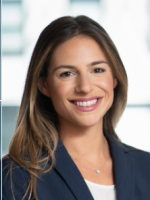On April 1, 2020, the Department of Labor (DOL) issued its Final Rule regarding the implementation of the Families First Coronavirus Response Act (FFCRA). On April 14, the State of New York brought suit against DOL under the Administrative Procedure Act (“APA”), claiming four key features of DOL’s Final Rule exceeded the agency’s authority under the APA and unduly restricted paid leave for employees. On August 3, 2020, the U.S. District Court for the Southern District of New York, in a decision rendered by Judge J. Paul Oetken, largely agreed with the State of New York and struck down the contested rules.
The decision in State of New York v. U.S. Department of Labor, et al. strikes down the Final Rule’s provisions that: 1) require employees to provide documentation before taking FFCRA leave; 2) require an employee to secure employer consent for intermittent leave; 3) exclude employees from FFCRA benefits if their employers do not have work available for them; and 4) broadly defines the term "health care provider."
Background – The FFCRA:
The FFCRA has two major provisions: the Emergency Paid Sick Leave Act (EPSLA) and the Emergency Family and Medical Leave Expansion Act (EFMLEA).
Under the EPSLA, employers with fewer than 500 employees and certain public employers must pay sick leave of up to 80 hours, or roughly 10 days, to full-time employees who are:
-
Subject to a federal, state or local quarantine or isolation order related to COVID-19.
-
Advised by a health care provider to self-quarantine due to concerns related to COVID-19.
-
Experiencing symptoms of COVID-19 and seeking a medical diagnosis.
-
Caring for an individual subject to a quarantine or isolation order by the government or a health care provider.
-
Caring for a child whose school or place of care is closed or whose child care provider is unavailable because of COVID-19.
-
Experiencing any other substantially similar condition specified by the secretary of health and human services in consultation with the Secretary of the Treasury and the Secretary of Labor.
Under the EFMLEA, employees of employers with 500 or fewer employees are eligible for an additional 10 weeks of leave to care for a child whose school or place of care is closed or whose child care provider is unavailable because of COVID-19.
DOL Rule Challenges
Documentation
Judge Oetken invalidated the Final Rule regarding documentation that requires employees to submit documentation to their employer prior to taking FFCRA leave that indicates: (1) the reason for the leave and (2) the duration of the requested leave. Judge Oetken held this rule is in "unambiguous conflict" with the FFCRA statutory provision requiring advance notice "as is practicable" only when "the necessity for [leave] is foreseeable." The court also held that "to the extent that the final rule's documentation requirement imposes a different and more stringent condition to leave, it is inconsistent with the statute's unambiguous notice provisions."
Intermittent Leave
Judge Oetken also invalidated the Final Rule regarding intermittent leave, which provides that workers can take less than their full leave allotment only when they don't pose an infection risk, and only when the worker and their employer agree to intermittent leave. This would result in a worker who has COVID-19 symptoms and is seeking a diagnosis (and who could therefore pose an infection risk) to be unable to take intermittent leave, while a worker who has to care for their child (and who does not pose an infection risk) could, with permission.
The court agreed with the DOL's general prohibition on intermittent leave when an employee created an infection risk. However, the court held the employer-permission requirement for those conditions for which intermittent leave is allowed was "unreasoned." The court ruled there was no rationale for requiring employer permission for intermittent leave for qualifying conditions that do not pose an infection risk.
Work-Availability Requirement
The court invalidated the Final Rule’s "work-availability requirement," which requires that work must be available with the employer for an employee to be eligible for benefits. The court struck this requirement and held that FFCRA benefits apply even where work is not available, and thus furloughed employees may now have rights to FFCRA leave. The court noted the Final Rule's work-availability requirement "is hugely consequential for the employees and employers covered by the FFCRA, because the COVID-19 crisis has occasioned the temporary shutdown and slowdown of countless businesses nationwide, causing in turn a decrease in work immediately available for employees who otherwise remain formally employed."
Health Care Provider Definition
Finally, the court invalided the Final Rule’s definition of a “health care provider.” Judge Oetken ruled the regulatory definition was "vastly overbroad" because it did not focus on whether the employee is capable of providing health care services. Instead, the Final Rule’s definition of “health care provider” was overly board because it “hinge[d] entirely on the identity of the employer . . ..” Thus, to demonstrate the expansiveness of DOL’s definition, the court pointed out that an “English professor, librarian, or cafeteria manager at a university with a medical school would all be ‘health care providers’ under the Rule.” Because of the overreaching definition, the court noted that the statutory text “requires at least a minimally role-specific determination.”
What is Next?
Four Key Takeaways:
-
As to documentation, the decision appears to allow employers to request documentation where the leave is “foreseeable” and does not appear to preclude an employer from obtaining documentation after leave is approved.
-
As to intermittent leave, employer “permission” is no longer required. However, the remainder of the Final Rule is still in effect, i.e., intermittent leave is not available to employees who are infected or pose a health risk.
-
FFCRA leave is available to employees who need to take leave even if the employer does not have work available. Thus, furloughed employees are now eligible for FFCRA.
-
Last, while Judge Oetken did not define who constitutes a “health care provider,” the decision makes it clear who is not, i.e., non-medical personnel are not exempted from the FFCRA.
This ruling will likely be appealed to the Second Circuit, and it is unclear whether the Circuit Court will stay its application pending a determination on appeal. In the meantime, employers are left to grapple with new ambiguities. Until there is a ruling to the contrary, employers are advised to follow the new interpretation of the FFCRA and alert affected employees of these changes.



 />i
/>i

